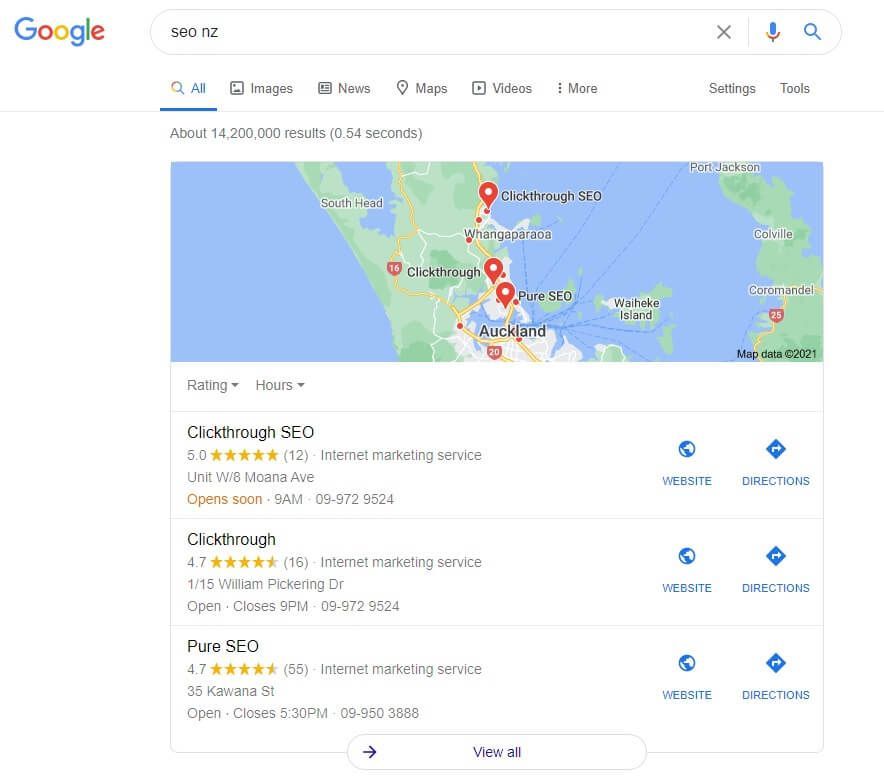Why Your Marketing Staff Need To Understand The Seo Basics

Search engine optimisation (SEO) is not something you naturally know how to do. It’s a relatively new concept and one that has continuously evolved and developed as the years go by.
Contents
- It’s Easier Than Ever Before
- SEO Is Constantly Evolving
- Organic Search Can Be Your Best Source of Traffic
- You Can Build Credibility and Trust
- You Can Provide a Better User Experience
- You Can Tap into the Local Market
- SEO Is Affordable
- I Want My Marketing Team to Learn More; What Do I Do?
Listen to this article
However, as new as it is, there can be a lot of value in being the early bird that gets the worm. If you haven’t yet put steps in place to ensure your marketing staff understand the SEO basics, then now might be the time.
It’s Easier Than Ever Before
If arranging accommodation and travel for your team to attend an SEO eLearning coursewas one of the main reasons you didn’t consider it, that’s no longer a problem.
While COVID-19 has ravaged the world, it has also enabled previously in-person events to proceed online, including SEO and marketing courses.
More and more event and programme organisers are developing learning modules that key marketing staff can access with ease. They can stay in the comfort of their home – or your business – while learning valuable information to improve your digital presence.
SEO Is Constantly Evolving

Even if you have learned some SEO techniques in the past, that doesn’t mean your training is over, and you no longer require education. Just like the medical field, technology and best practices are continuously evolving include new information surrounding organic searches, natural searches, paid and unpaid searches, and more.
Let’s take a look back to where we were, to where we are now. Reviewing this article in just five years would produce even more dramatic differences.
Mobile vs. Desktop
When SEO techniques first became known, there was a massive emphasis on desktop computers. We were targeting our content and websites to computer users. With over two billion people now using their mobile phones to access the internet, there has been a dramatic change in best SEO practices.
Google now rewards websites that are mobile-friendly because it understands the changing trends. It wants you to change with them.
Quality Content
When SEO was in its infancy, websites were easily able to rank for keywords. Some website developers, marketing teams, and business owners would stuff their sites full of poor-quality, duplicated, and keyword-drenched content. It wasn’t about doing right by the viewer; it was about being seen in search results.
Now, it’s all about quality. Google will prioritise a website featuring informative and well-written content over one that just has keywords galore but no true substance. While you can still integrate keywords and long-tail keywords to benefit from natural searches, you just have to do so while making sure you’re benefiting the reader.
Link-Building Schemes
Early on, website creators realised that if they used fake links from different sources, they could increase their rankings. This became known as a black hat SEO technique.
When Google caught on, they penalised, de-listed, and banned those who took part in this shady business. Now, they encourage website owners to focus on natural links through guest posts and links from authoritative websites.
These few examples have shown a dramatic shift in behaviours in just a few short years. If you don’t keep up with SEO education, there’s every chance you’ll be left behind with techniques and skills that are no longer relevant for putting your business image front and centre.
Organic Search Can Be Your Best Source of Traffic
It’s easy for a marketing team to throw money into endless advertising avenues to direct traffic to your website. You might end up spending several thousand dollars on platforms you can’t track or monitor, with the hope that at least a few ad viewers made it to your site.
The reality is, organic search traffic is one of the best ways to improve your business’s web performance. The more time and effort you put into improving your site’s SEO, the more organic results, or natural searches, from which you can benefit. This means your marketing team and you, as the owner, save money while potentially benefiting from more web sales.
You Can Build Credibility and Trust
You know your business is trustworthy and credible, but do your customers, and by default, Google? If Google and other search engines have no measurable data to confirm you’ve got a trustworthy and credible site, they won’t display it as such.
It takes several elements to build up that trust, including the use of on-page elements and content, quality backlinks, positive user behaviours, and algorithms. Requesting that your marketing team learn the basics of SEO could mean big things for consumer trust and your website’s future popularity.
You Can Provide a Better User Experience
You might think that the best user experience on a website is one based on looks and feel. Sure, effortless navigation and the best graphic design are essential components of a business website. Still, there’s more to the picture, and it can begin before your prospective purchasers even land on your site.
By using SEO techniques like keyword research, searcher language and intent, title tags, and meta descriptions, you are laying the foundation for solving a consumer’s problem.
Keywords
Keywords are commonly searched words related to the products and services you are selling. When you include these in your website’s content, they may appear in the Google search results when someone looks for those specific words. Searcher Language & Intent
It’s important to put a lot of thought into the keywords you’re going to use because searcher language plays an integral part in SEO. Not everyone looking for the products you sell will know the exact name for them.
For example, you might stock scarlet footwear. You can include this term throughout your site, but what if people are only searching for red shoes? Being able to use variations can be crucial for increased web traffic.
Searcher intent can often require clarity, as well. If your business offers shoe repairs, you may attract two types of searchers – those who want someone to repair the shoes and those who want advice on how to repair shoes themselves. The inclusion of long-tail keywords in your web content can make this clear.
If your marketing team is not familiar with the intricacies of how people search and what they search, encourage them to undertake SEO research.
Title Tags
A title tag is the text you use as the clickable link in your search result. You typically have around 70 characters to work with, so creativity is vital. You want to use language related to your keyword, but you also want to grab a potential purchaser’s attention.
Meta Descriptions
Another thing your marketing team shouldn’t neglect is the meta descriptions used for each page of your website. These allow you to expand on what you stated in your title tag.
However, you have up to around 300 characters to play with for this body of text. Use the space wisely, as it’s crucial to add valuable information that also encourages people to find out more.
You Can Tap into the Local Market

If your marketing team is only familiar with SEO on a national or international level, then the next best step is focusing on a local level. With more and more businesses taking advantage of the benefits that SEO brings, it’s a hot market out there.
Be specific with your local SEO practices to bring in purchasers from the same town, city, and region as you. This process can include using local citations, a Google My Business listing with updated contact and location information, and local, relevant backlinks.
User reviews can also improve your local presence. Each time someone searches for something specific in your area, you are more likely to appear on someone’s device with reviews, contact information, and the proximity of your business to them.
SEO Is Affordable
There are multiple marketing avenues that a marketing team can tap into. They can go to the extreme end with promotional events and giveaways. Or, they can opt for more traditional platforms like newspaper and radio advertising.
However, these costly forms of advertising don’t always have sustainable results you can track. SEO not only provides real-time data so you can see what’s working and what isn’t, but it’s affordable, as well.
Setting up an SEO-friendly website takes very little of your time and money. You can then spend as much as you want to on PPC ads while you wait for your organic, unpaid search growth to kick in. Many businesses then rely on a combination of PPC and SEO to keep the momentum going.
I Want My Marketing Team to Learn More; What Do I Do?
If your marketing team hasn’t yet heard about the magic of SEO, then there’s no better time than now to fill them in. You can leave them to their own devices to browse the internet for information on the best ways to improve web traffic through SEO or sign them up for an online learning course. This small amount of time, effort, and money can serve your business well in the years to come.
FAQ
Is SEO an affordable marketing strategy?
Yes, SEO is an affordable marketing strategy compared to traditional advertising methods. Setting up an SEO-friendly website requires minimal time and investment, and businesses can track real-time data to assess the effectiveness of their SEO efforts.
How has SEO evolved over the years?
SEO techniques and best practices have continuously evolved, including changes in mobile vs. desktop optimization, emphasis on quality content, and a shift from link-building schemes to natural links from authoritative websites.
Digital Blog












